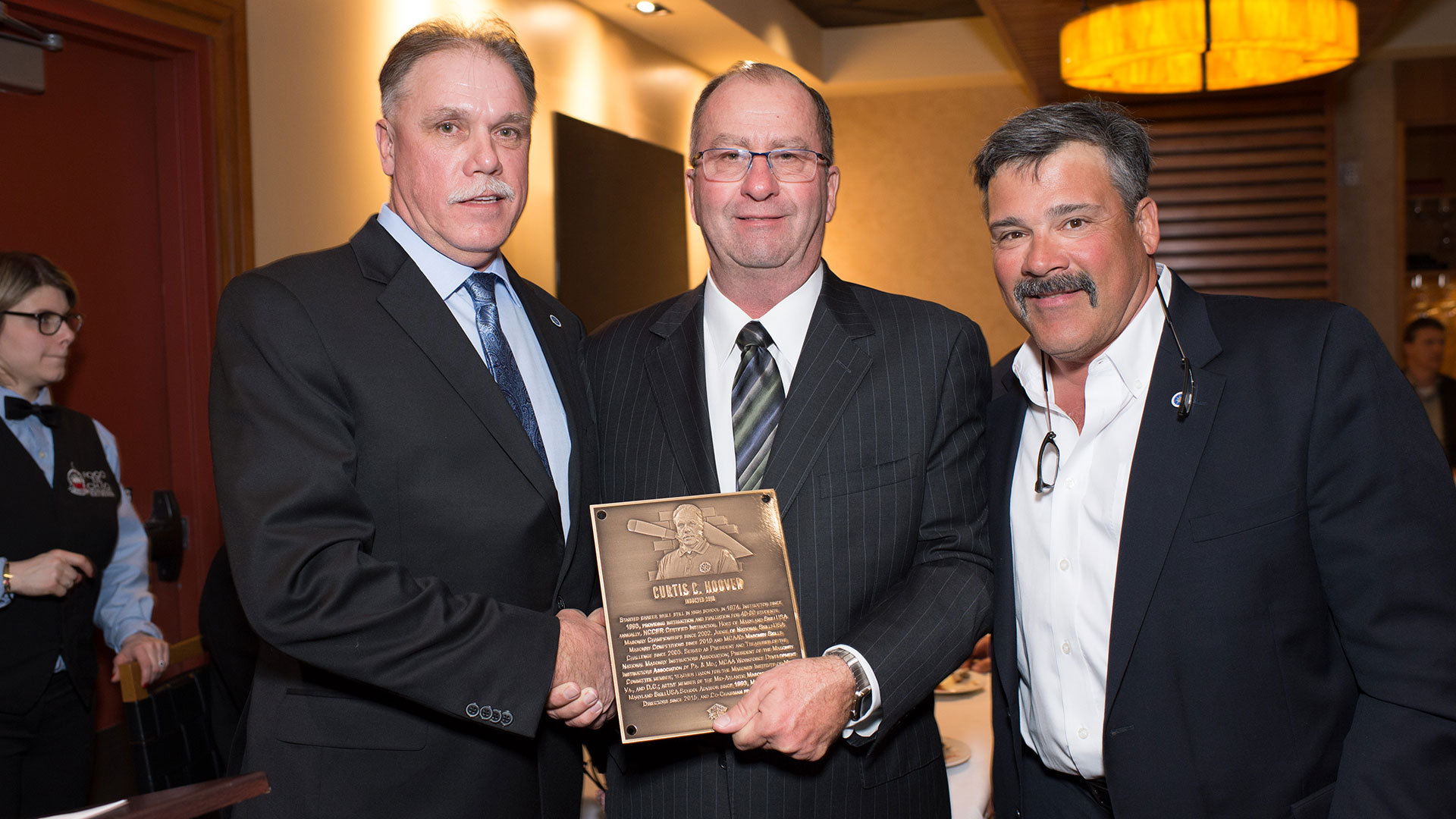
MCAA Chairman Mike Sutter (right) presents Mackie Bounds with his Masonry Hall of Fame plaque.

Justin Breithaupt, Jr. (left) accepts the Masonry Hall of Fame plaque on behalf of his father from MCAA Chairman Mike Sutter (right).

MCAA Chairman Mike Sutter (center) presents Curtis Hoover (left) with his Masonry Hall of Fame plaque.

MCAA Chairman Mike Sutter (right) presents Damian Lang with his Masonry Hall of Fame plaque.